7 reasons your sink won't drain – plus expert tips to unclog a sink like a pro
Why your sink is clogged, how to fix it, and stop it from happening again
Hayley Gilbert
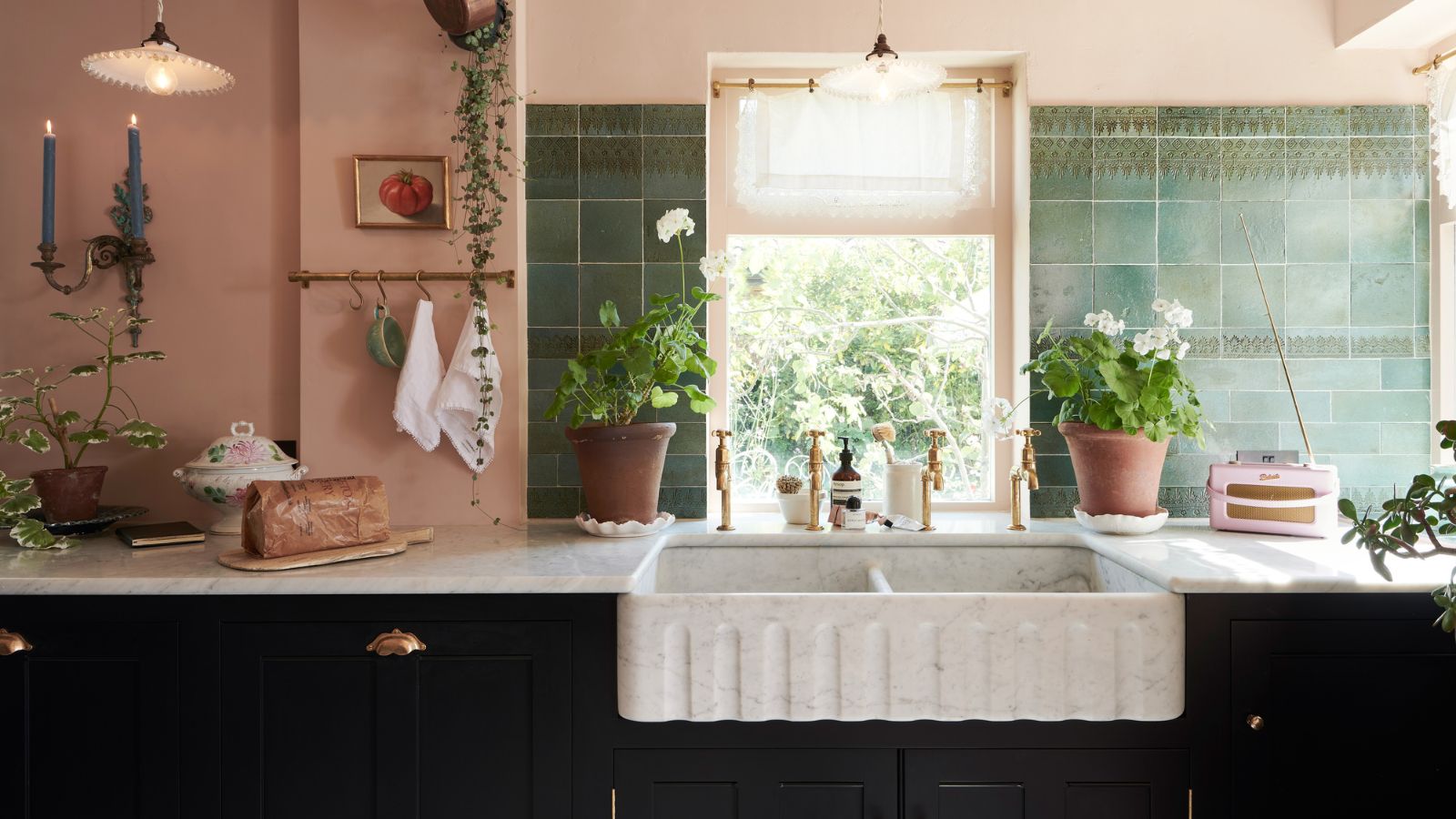
- Meet the experts
- How do you unclog a sink with standing water?
- What if there no block but the sink won't drain?
- Will bleach work?
- Can I use Drano?
- Can I use baking soda?
- FAQs
- What to shop
- Preventing clogs
- How to unclog a sink that won't drain
- 7. Blocked external drain
- 6. Poor installation
- 5. Vent pipe issues
- 4. Debris and dirt
- 3. Hair and soap
- 2. Grease and food
- 1. Foreign objects
Knowing how to unclog a sink that won't drain and stop it from getting blocked again in the future is part of the essential DIY skills every homeowner should know.
Meet the experts

Joseph is VP of Operations at Benjamin Franklin Plumbing, with years of experience in the plumbing industry

Kodi is the campus director at the National Technical Institute in Las Vegas, with more than 10 years of experience. He starting in plumbing at the age of 17, and has since dedicated himself to learning plumbing and turned it into a lifelong career. He has trained in all aspects of plumbing, and is also trained in industrial plumbing, facilities and maintenance, service, and new construction plumbing.
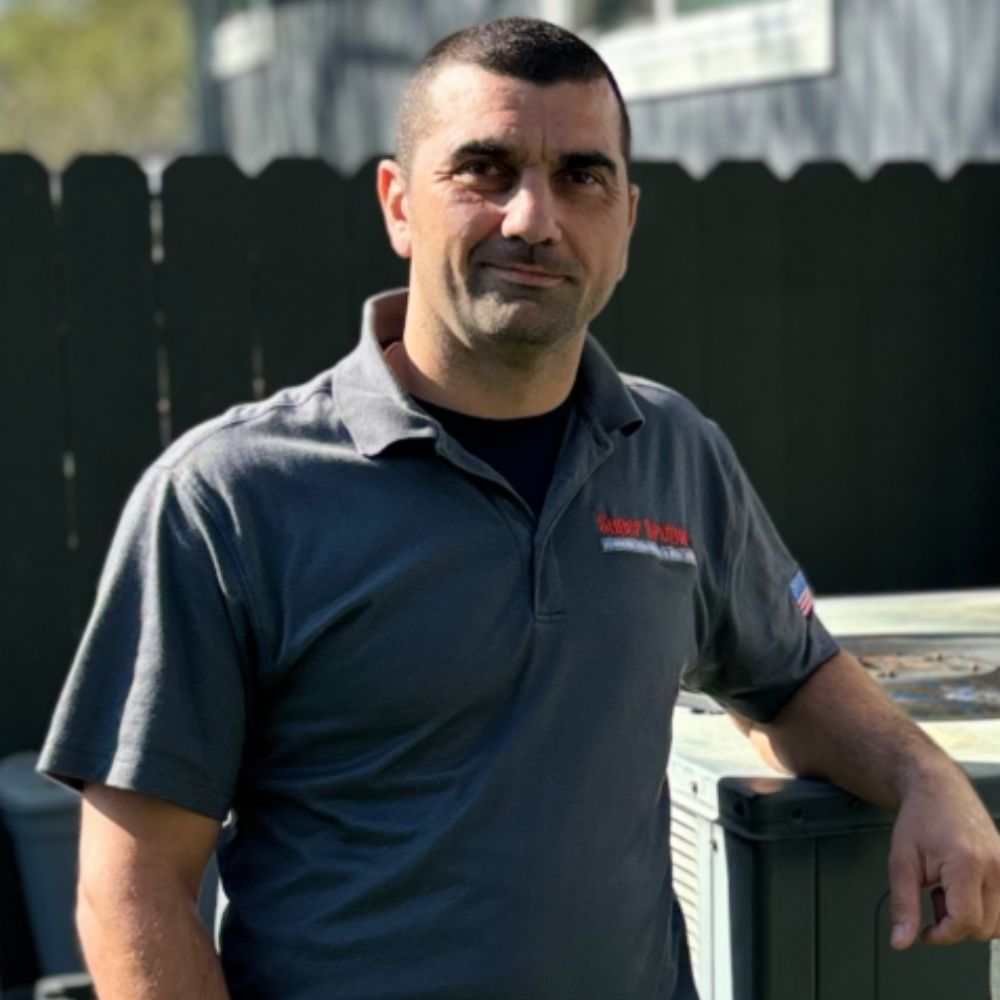
Super Brothers specializes in plumbing services, heating and air, water heaters and re-piping.

Al is the founder and CEO of A. Fagundes Plumbing & Heating Inc, a locally owned and family-operated company which he founded in 2003.

Aaron is a licensed master plumber and CEO of Aaron Services: Plumbing, Heating, Cooling. He's been plumbing for more than 35 years and has led his team through thousands of plumbing service calls a year. He has helped countless customers with clogged drains.
Standing water is a very obvious sign that your sink has a blockage that requires attention. Just as in the bathroom, it can be a sign that you need to unclog a shower drain. The first step is to don some rubber gloves and feel around the drain hole for any obstructions that you can’t see through the murky water.
A plunger is often the best way to handle a sink with standing water, not least because you can use a plunger without having to remove all the water in the sink. If the sink is very full, it is worth removing some water, though, using a jug and bucket, to prevent it from slopping over the side while you plunge. Once you have just an inch or so of water in the sink, you can start plunging.
Drain cleaners, plungers, and plumber’s snakes are just a few of the easy methods you can try first when dealing with a clogged sink. If your DIY attempts fail, there may be a more significant issue at play and it may be time to call the pros.
How do you unclog a sink with standing water?
If you've checked thoroughly for blockages, it's possible your sink won't drain because there is an airlock or blocked plumbing vent. Plungers and snake drains are the most effective in these scenarios, but often, you'll need to call a plumber to check the vent pipe.
What if there no block but the sink won't drain?
Bleach will not make your sink drain and should not be used to sanitize and deodorize drains. It cannot dissolve debris and hair.
Will bleach make my sink drain?
Amazon bestseller, Drano, is suitable for a sink that won't drain. Simply empty any standing water in the sink into a bucket, pour in the product, and leave it for 15-30 minutes before flushing through with boiling water.
Design expertise in your inbox – from inspiring decorating ideas and beautiful celebrity homes to practical gardening advice and shopping round-ups.
Can I use Drano if my sink won't drain?
Whilst you may have seen advice on using this natural combination, some experts warn you should never use vinegar and baking soda to unclog a drain as it can 'inadvertently reduce the lifespan of your plumbing infrastructure.'
This duo can corrode old pipes, damage rubber seals, and usually isn't strong enough to banish clogs.
Can I used baking soda and vinegar to unclog my sink?
FAQs
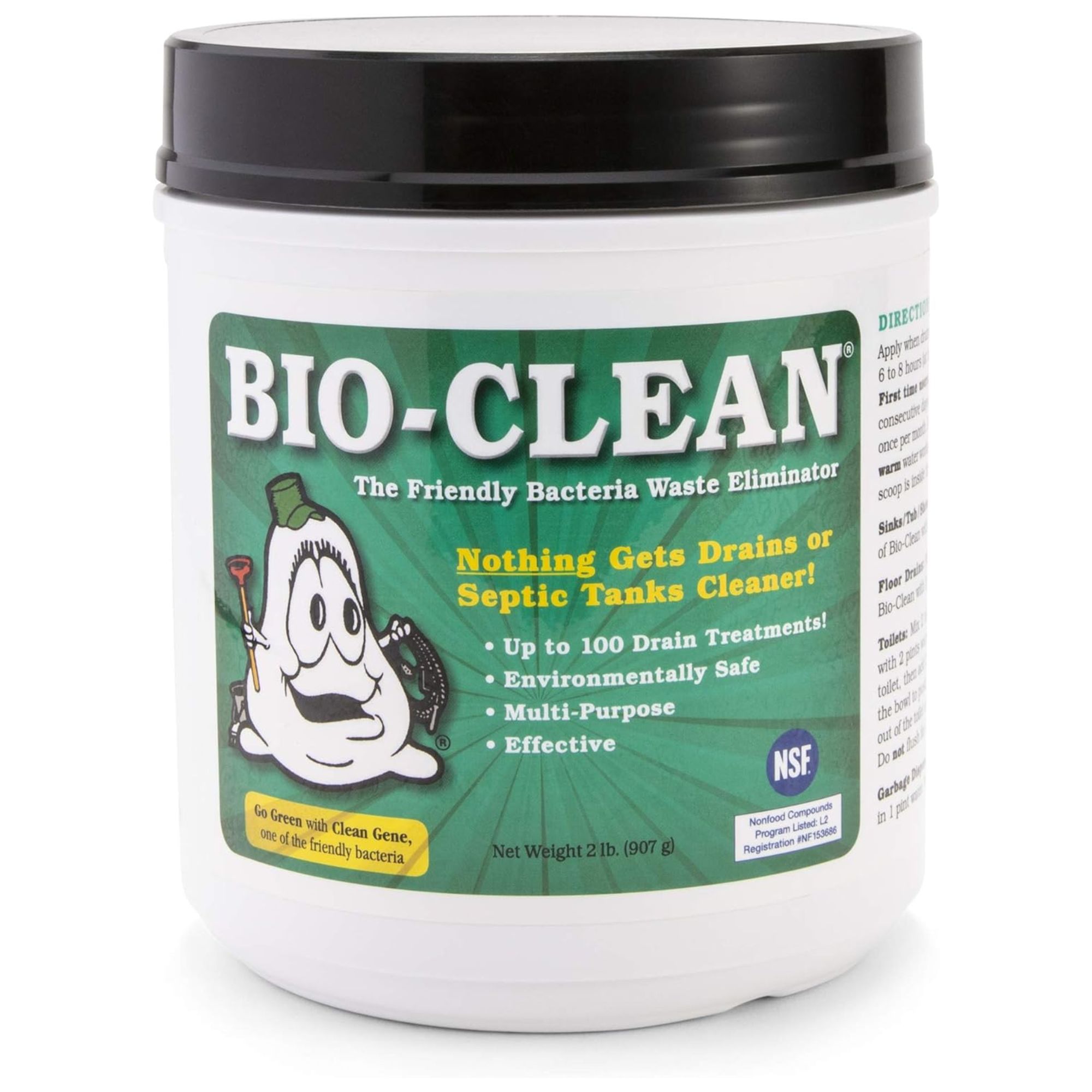
This multipurpose, eco-friendly drain cleaner digests dead organic waste found in your plumbing system, and restores drain flow to full capacity within days.
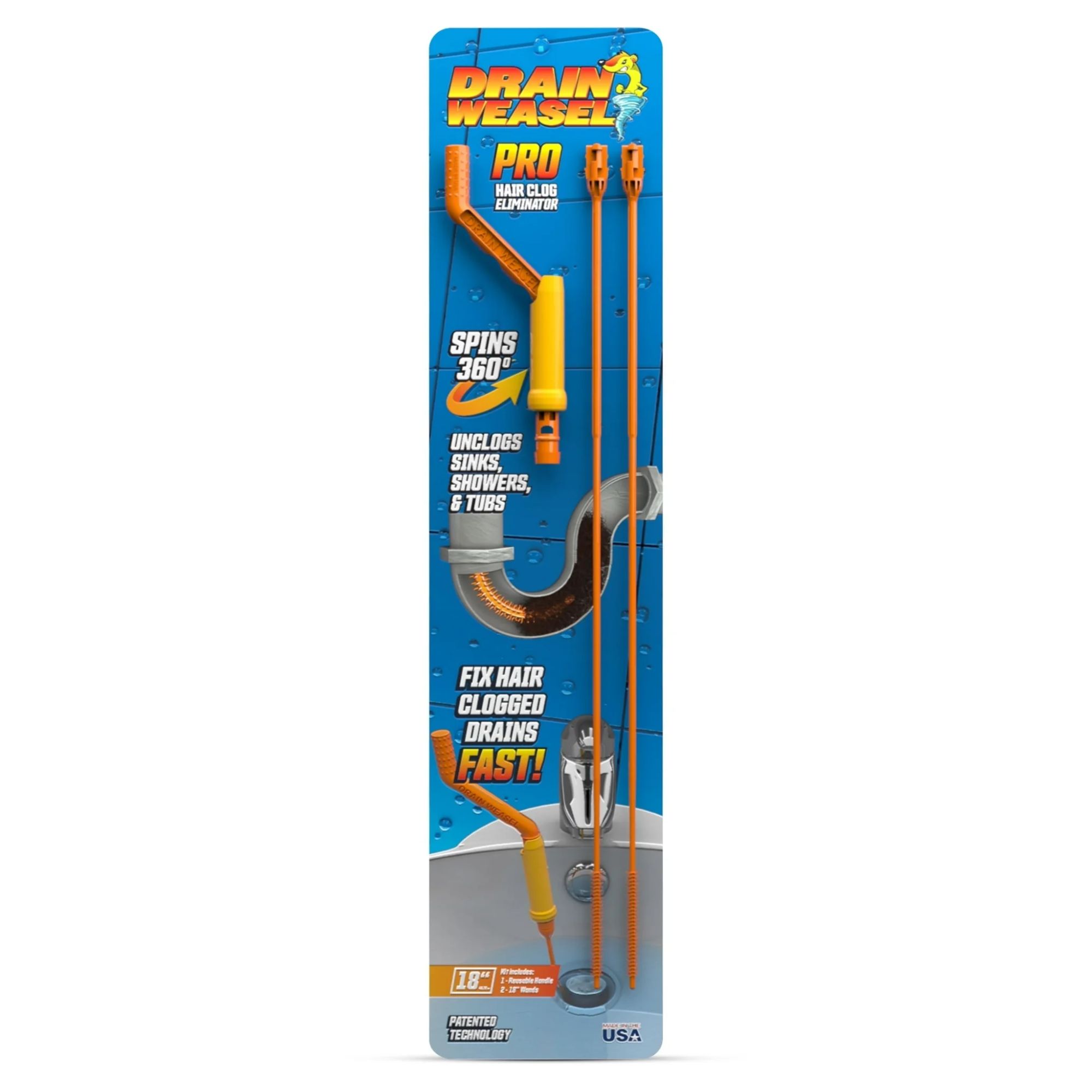
This bestselling drain snake includes an easy to use handle that spins 360 degrees, and works with most drains without the need to disassemble the drain stopper.
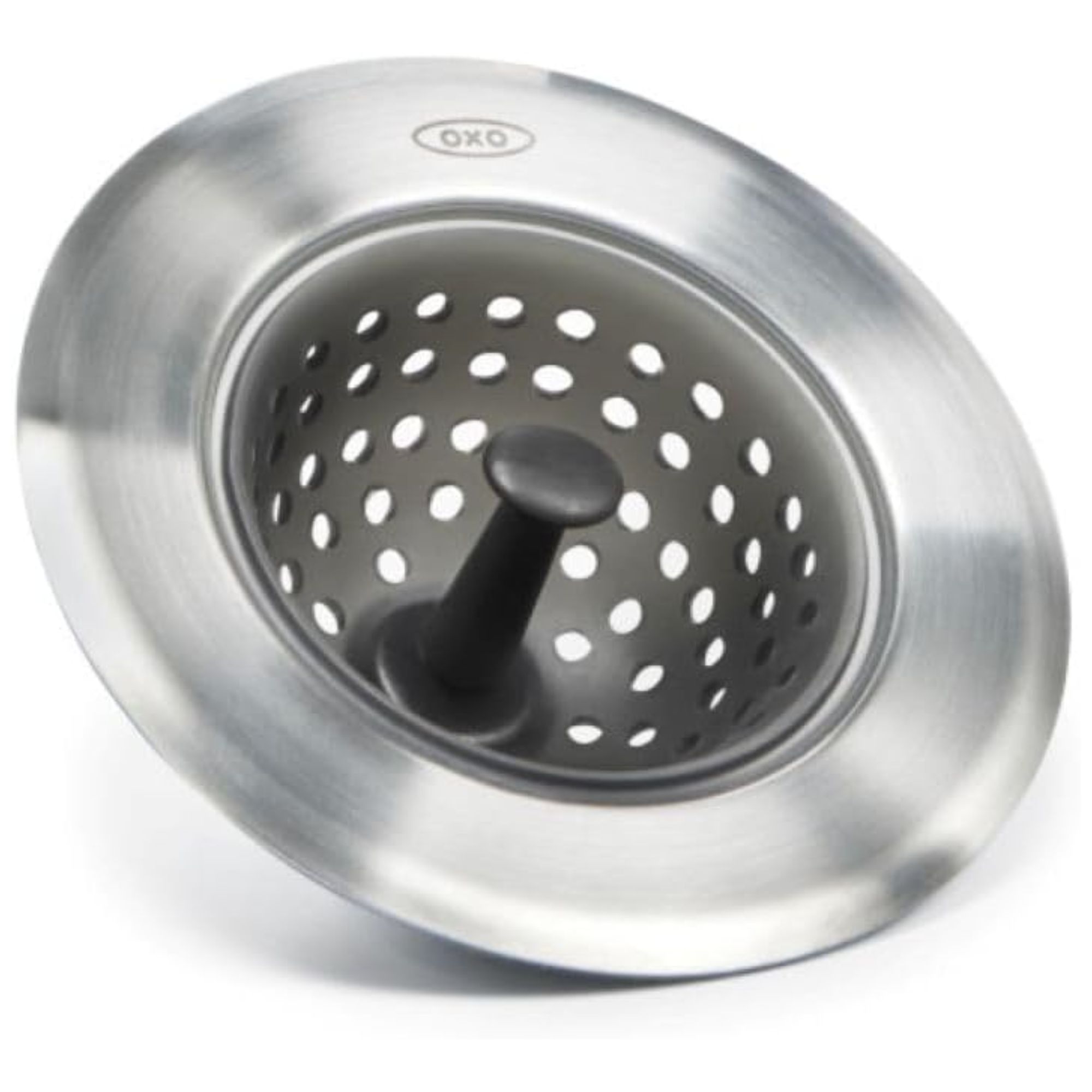
This sink strainer is easy to clean, as the silicone can be inverted for cleaning, and is also dishwasher safe and PVC-free.
All prices were correct at the time of publication.
What to shop
After all this effort, you'll want to avoid your sink from clogging again in the future.
Joseph Wade, VP of operations at Benjamin Franklin Plumbing, advises, 'Be sure to avoid tossing down the sink large bones, potato peels, coffee grounds, fat, grease, and fibrous vegetables like celery and asparagus.'
For these, pop them in a food waste bin, such as the odor-proof mini ENLOY Compost Bin available at Walmart.
'Paint is also a big no-go, as the paint can create a build-up over time and it’s also bad for the environment,' adds Joseph, which is why it's one of the liquids you should never pour down your sink.
We recommend the MR.SIGA Kitchen Sink Strainer, available at Amazon as a preventative measure.
Additionally, it's important to regularly clean your kitchen sink drain, too. You can do this by cleaning with vinegar, which you can also pour directly down, before following up with a cleaning spray, such as the Mrs. Meyer’s Clean Day Multi-Surface Everyday Cleaner available at Walmart.
Alternatively, you can try one of the DIY draining cleaning solutions professionals swear by, like hydrogen peroxide or a salt and baking soda scrub.
Jelina Saliu, chief innovation officer at Safely, the home care and cleaning brand by Kris Jenner and Emma Grede, says, 'Combine a cleaning spray with some baking soda. Then use a dish brush to combine and scrub into your sink.
'This should help with discoloration and leave a nice shine.'
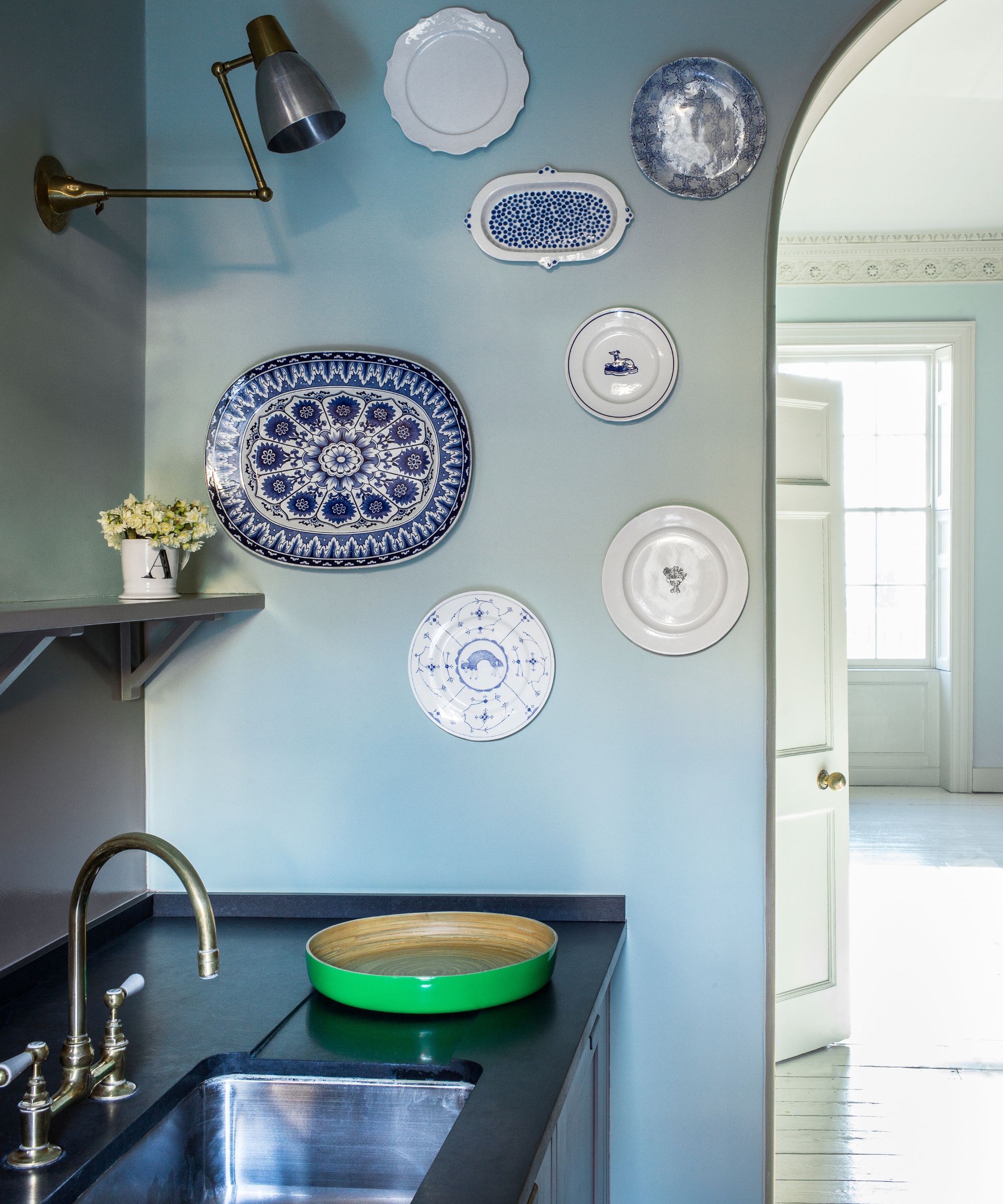
'Careful use and diligent maintenance will also extend the life of your sink, which means fewer calls to the plumber and more money in your pocket.'
How to prevent sinks clogging
If none of these steps have worked, there's nothing left to do but call in the pros to help.
Plumbing expert Alex explains, 'If these steps fail, or the clog continues to return, there could be a more serious problem at hand, like a blockage in the main drain line, or even a root intrusion by trees.
'After you've attempted all of the above, it's now time to call in a professional plumber. We have the tools to feed a motorized auger deep into the drain pipe or perform a video camera inspection to determine precisely where the clog is.
'In some instances, a plumber will utilize a hydro-jetter, which shoots high-pressure water through the pipes to get them spick and span.'
8. Call in the pros
Meddling with pipework may seem a bridge too far, but it’s worth knowing the P-trap under a sink is designed to easily unscrew precisely for unclogging and maintenance purposes and is simple to do yourself.
The P-trap (plumber’s trap), or P-stop, is the curved pipe under the sink, which holds water and is designed to stop drain odors coming back up out of the drain. If debris is stuck in this bend, it can be the cause of your clogged sink.
You may already know how to do this if you've ever had to change a kitchen sink drain, but, if you don't, plumber Al Fagundes directs, 'Place a bucket [such as the Sterilite Spout Pail available at Walmart] underneath the P-trap. This will catch the water in the P-trap as you take it apart.
'Using a wrench or your hands, unscrew the slip nuts on both ends. Then, remove the trap and clean out the debris inside. Finally, reassemble the trap and test the drain.'
7. Unscrew and clean the P-trap
As plumbing expert Shaylin says, an additional step to clearing a drain can be by using an enzyme-based cleaner, such as the bleach-free Green Gobbler Liquid Drain Clog Remover & Cleaner available at Amazon.
'Follow the directions of the product,' he says. 'These can work to unclog sinks due to the natural bacteria and enzymes digesting organic clogs without damaging the pipes.
Importantly, says Kodi Wilson, plumbing expert at the National Technical Institute, be careful when you use chemical drain cleaners, and always avoid them as far as possible.
'Overusing these products may cause damage to pipes,' he explains. 'They are also a hazard to the individual using them and others in the home.'
Some are more eco-friendly than others, so check the label and choose one that won’t harm wildlife, plants and waterways.
The Environmental Working Group (EWG) gives Drainbo, available from Amazon, a rating of B, low concern to humans and the environment. Just keep the windows open to avoid any asthma or breathing issues from the smell.
6. Use an ezymatic opener
You don’t have to be a professional plumber to own a plumber’s snake or drain snake. Basic handheld plumber’s snakes, also known as drain augers, are readily available at hardware stores, and you can buy them at Amazon for quick delivery, too.
Once you know how to use a drain snake, it's an easy and effective tool to keep on hand.
This clever device has a flexible, coiled hose that is slim enough to be inserted through the drain (plug hole), and a handle that is turned so that the coil burrows through any blockages it hits upon.
When choosing a plumber’s snake, go for a reasonably long coil, and consider a model that attaches to a cordless drill if you have one, for extra turning speed and power. In a pinch, says licensed plumber Aaron, you can use a stretched wire clothes hanger.
Shaylin King, owner of Mr. Rooter Plumbing of Eastern Washington, a Neighborly Company, advises, 'When using a manual drain snake, insert it into the drain, twist or push it deeper to hook onto debris in the drain, and pull it out slowly to remove gunk. Then, run hot water to flush the drain.
'A snake drain works by breaking and pulling out the clog. They can work well for pulling out hair from drains, but for sink kitchen sink clogs, a hand-crank snake controlled by a plumber may be needed.'
5. Try a plumber’s snake
Plungers essentially suction up water to release blockages in the process, so knowing how to use a plunger can rescue things in a range of scenarios.
To unclog a sink this way, use a flat cup plunger, such as the Korky Mini Sink and Drain Plunger available at Amazon, which Alex Atkinson, plumber and HVAC technician at Super Brothers, recommends.
'First, block the overflow hole with a wet rag or put a drain stopper in the second sink if your sink is a double,' he says. 'Fill the sink with about two to three inches of warm water to create suction.
'Then place the plunger over the drain pipe and press down and pull up 10–15 times firmly. If the clog is near the surface, this will loosen it most of the time. Hear a gurgling sound and watch the water drain quickly, which means the clog is being removed.'
Additionally, adds master plumber Aaron, when the clog comes up out of the drain, use paper towels such as the Bounty Paper Towels available at Walmart, to gather up debris and throw it away.
4. Use a plunger
Your first port of call for actually unclogging the sink, says Stuart McGinn, draining expert at Drain Detectives, is boiling some water.
'For slow draining sinks and mild clogs, the first call to action is as simple as boiling your kettle, and slowly pouring it down the plug hole,' he says. 'After around five to 10 minutes, repeat the process with another kettle of boiling water and check if the problem has resolved.'
Importantly, adds Al Fagundes, founder and CEO at A. Fagundes Plumbing & Heating, you really want to avoid pouring the water in all at once, and pouring it too slowly for it to work.
'Hopefully, the hot water works the clogged material loose, and your drain returns to normal,' he says. 'If not, it's time to try another method.'
This tip may come in handy when unclogging a shower drain, too.
3. Try boiling water
If you’ve been a little over-zealous when feeding an electric waste disposal unit fitted to your sink, it could be the source of your blockage. Happily, unclogging a garbage disposal is often an easy fix that requires removing the offending obstacle, with the machine turned off of course, and then restarting.
‘If your food waste disposer won't run you may need to reset it using the overload protector button on the bottom,’ says Marco Pastore from InSinkErator. ‘If the food waste disposer is clogged, if it is run for a very long period of time, if it overheats, or if there is something wrong with the disposer, it will shut down automatically and need to be reset.’
2. Reset the garbage disposal
First things first, start by removing the pop-up drain in the bottom of the sink basic, says Aaron Adams, licensed master plumber and CEO of Aaron Services: Plumbing, Heating, Cooling.
'You can normally remove this by gently twisting the flat disc that pops up to open the drain and compresses to close the drain counter-clockwise,' he advises. This will make it easier to unclog a bathtub drain, too.
If you don't have a pop-up drain, you can skip this step.
1. Remove the pop-up drain
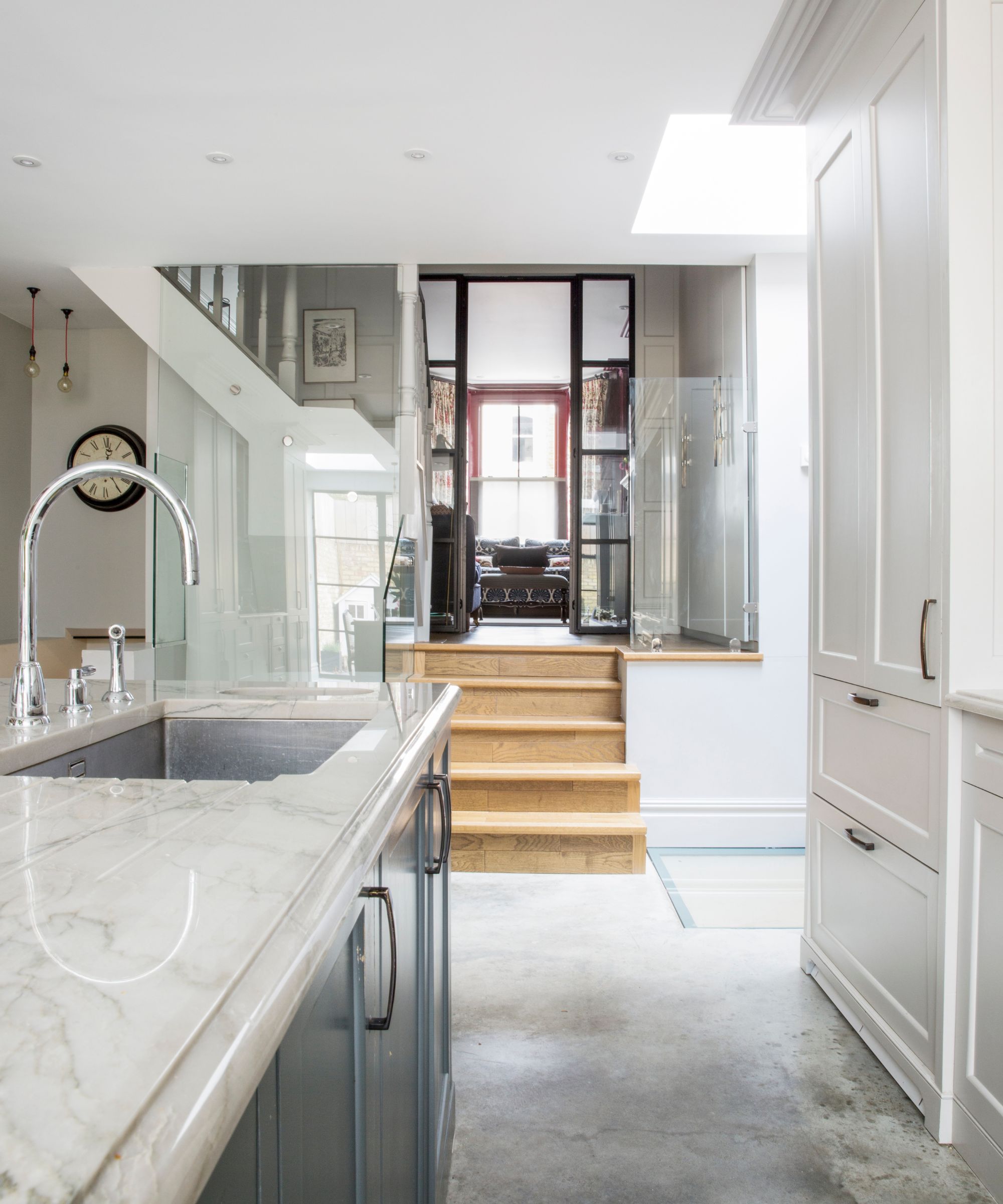
There are eight main ways to unclog a sink that won't drain
How to unclog a sink that won't drain
‘Kitchen sinks can also be affected as a result of external drains being blocked,’ adds Kevin Began, director at Blockbusters Drainage and Plumbing Services.
‘For example, if the inspection chamber is full, this can lead to a kitchen sink refusing to clear. In these instances, a drain engineer would inspect all the relevant facilities before conducting the clearance of the external inspection chambers with high-pressure water jetting.
‘The facilities would be checked again and, if a drainage engineer discovers an underlying fault that may have caused the blockage, a CCTV drain survey would be required to view any potential problems within the pipework itself.
'The footage from this survey would be used to produce a report identifying any issues found, providing recommendations for remedial repair and a costing.’
7. Blocked external drain
Falling victim to a cowboy or rogue builder isn't the only time poor installation may be the culprit behind your sink not draining.
It may be that a well-intentioned DIY job has gone awry and needs a professional plumber to come in and fix to restore water flow.
Either way, vet your professional by reading their Google client reviews, and a trusted tradesman checking platform such as Angi.
6. Poor installation
Kingdom Plumbing pro Nick Hendrix is clear about vent issues. He says, 'Typically, clogs will not happen when there is nothing in the drain. If the fixture does not drain properly even though it is clear, you may have a bigger issue related to the venting of the drain line, and for that, you will want to contact a plumber.'
5. Vent pipe issues
This issue can occur in a kitchen, utility room or bathroom sink drain, depending on what is being cleaned up in there.
For instance, muddy gym shoes being cleaned off in a utility room sink can lead to gravel, mud, leaves and more piling up in the pipe, whilst cleaning your hands in the middle of a DIY project can send man-made debris down it.
A blockage of dirt and debris in the P-trap, which is the curved pipe you'll often see under the sink, in the cabinet below, can result in drainage problems as the water pressure won't be enough to push the debris up and over the bend.
Bar adds, 'Some clogs are high enough in the drain that you can get them yourself by disassembling drain pipes. Most modern sink drain pipes simply screw together by hand, so they're easy to take apart and reassemble.'
4. Debris and dirt
Nick Hendrix, general manager of Kingdom Plumbing, says, 'The most common cause for sink blockage is hair and soap buildup. This can be easily remedied with a basic tool bought from any home improvement store.
'My favorite version is a tool called a Drain Weasel, which is sold at Home Depot. It has a debris-grabbing head which is somewhat like Velcro, and it can easily be stuck down into the drain and will draw up anything that is causing the clog.'
If your sink won't drain, and it's a space where you often wash your hair, or pour away cleaning chemicals or soap mixes, for instance, after mopping your floor, this could well be the culprit.
Plumbing pro David adds, ‘Loose hairs unknowingly rinsed down the drain tend to clog bathroom sinks. The longer they are, the more chaos they can cause and when clumps of hair accumulate over time, you have a recipe for a blocked drain disaster.’
You can also stay ahead of soap and debris build-up by dropping enzyme sticks from Amazon into the drain once a month, which will keep your drain unclogged and maintain the flow of water. Hair may still need to be manually removed.
3. Hair, soap and chemicals
Liquid fats solidify quickly after cooling, which can lead to tough blockages in sink drains. Never pour fat down the sink. Instead, drain it into a cup to harden before disposing of it in the trash, or line a bowl or your sink's drain with aluminum in a cup shape and pour liquid fat there, then wait for it to solidify and pop it in the trash.
To bust any solidified fat, use a liquid enzyme sink drain unblocker, available from Amazon for fast delivery.
A build-up of food debris can also mean your sink won't drain, so clear any leftover food particles into the trash can before rinsing and washing up.
Experienced plumber, Joseph Wade, VP of Operations at Benjamin Franklin Plumbing, adds, 'In the kitchen, you can avoid a clogged sink by carefully choosing what you put in the disposal. Careful use and diligent maintenance will also extend the life of your disposal, which means fewer calls to the plumber and more money in your pocket.
Joseph advises buying a screen trap, such as a stainless steel sink strainer from The Home Depot, to catch food debris in the sink.
2. Solidified grease, fat, and food
If a sudden blockage has occurred, consider if anything has been dropped down or slipped into it. Often, a sink will be slow draining first, before it stops draining, indicating a slow buildup.
However, a sudden blockage can indicate a physical block. Consider if any children in the house have dropped a toy or small item in there, or whether anything nearby is missing a lid, such as a tube of toothpaste.
Bar Zakheim, CEO of Better Place Design & Build, says, 'Some clogs are high enough in the drain that you can get them yourself by disassembling drain pipes. Most modern sink drain pipes simply screw together by hand, so they're easy to take apart and reassemble.'
Using a cheap sink drain catcher from Amazon will help you avoid the same problem again in the future, or you can replace the visible part of your sink's drain with a bathroom drain stopper.
If you're not feeling confident in doing this, do call the pros.
1. Foreign objects
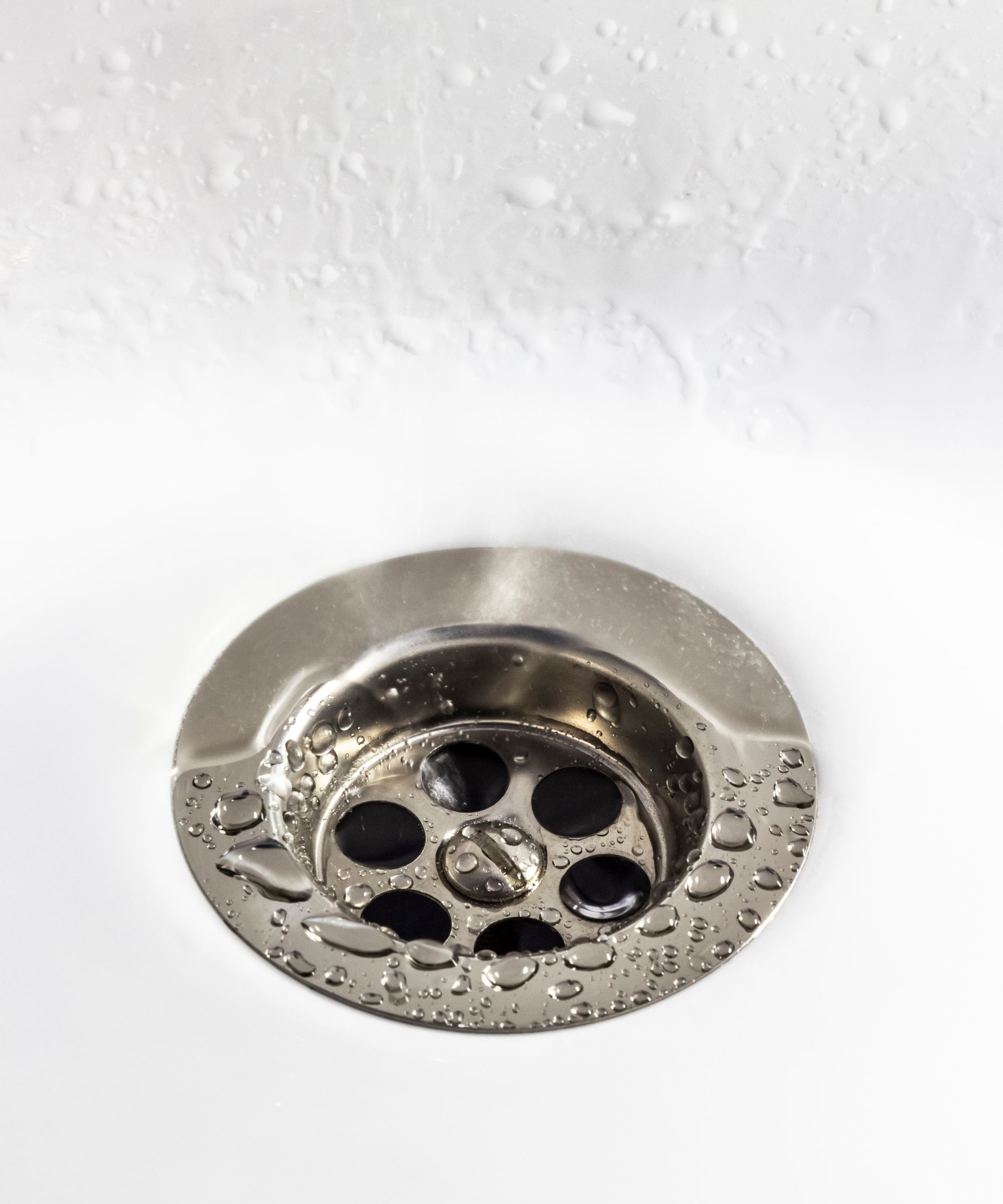
Did you drop something down the sink recently to stop it draining?
7 most common reasons that your sink won't drain
When your sink won't drain, it can cause nasty smells, odd sounds, standing water, and a heap of inconvenience, so understanding the main causes will help you quickly fix it and stop it from happening again.
Here, our expert plumbers and in-house cleaning pros reveal the seven main reasons your sink won't drain. This will ensure you pick the correct method of the eight available to unclog the sink the first time around, and get the water flowing freely again.

Punteha was editor of Real Homes before joining Homes and Gardens. She has written and edited wellbeing, lifestyle, and consumer pieces for the national press for 17 years, working across print and digital newspapers and magazines. She’s a Sunday Times bestselling ghostwriter, former BBC Good Food columnist and founding editor of independent magazine, lacunavoices.com. Punteha loves keeping her home clean, has tested and reviewed the latest robot vacuums and video doorbells, enjoys cooking, DIY, decluttering and spending weekends improving her newly-built home. Punteha is disabled and in chronic pain, so small, paced projects that bring big impact and make her household run smoothly are her focus.
- Hayley GilbertContributing Editor

